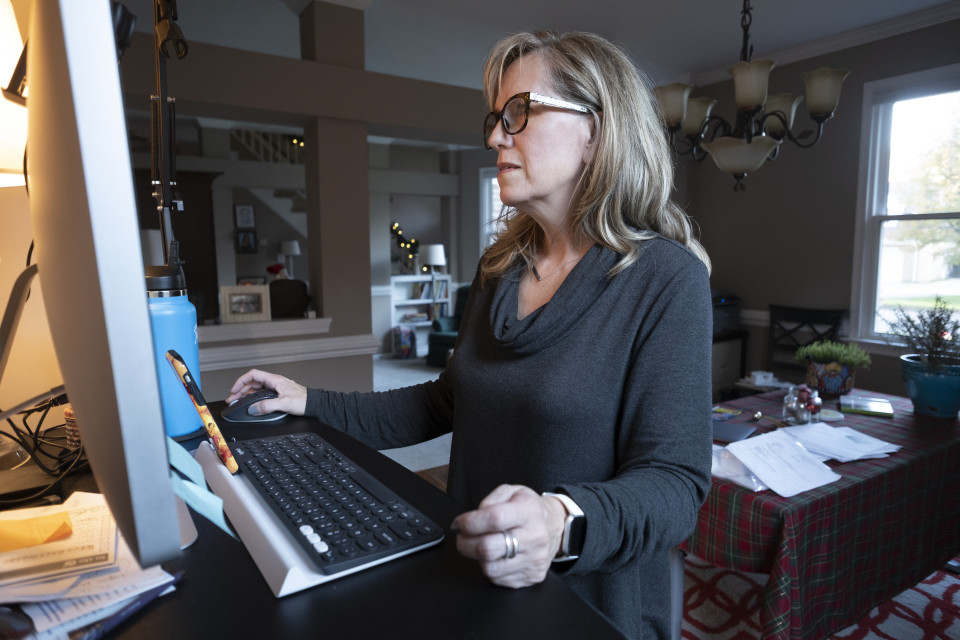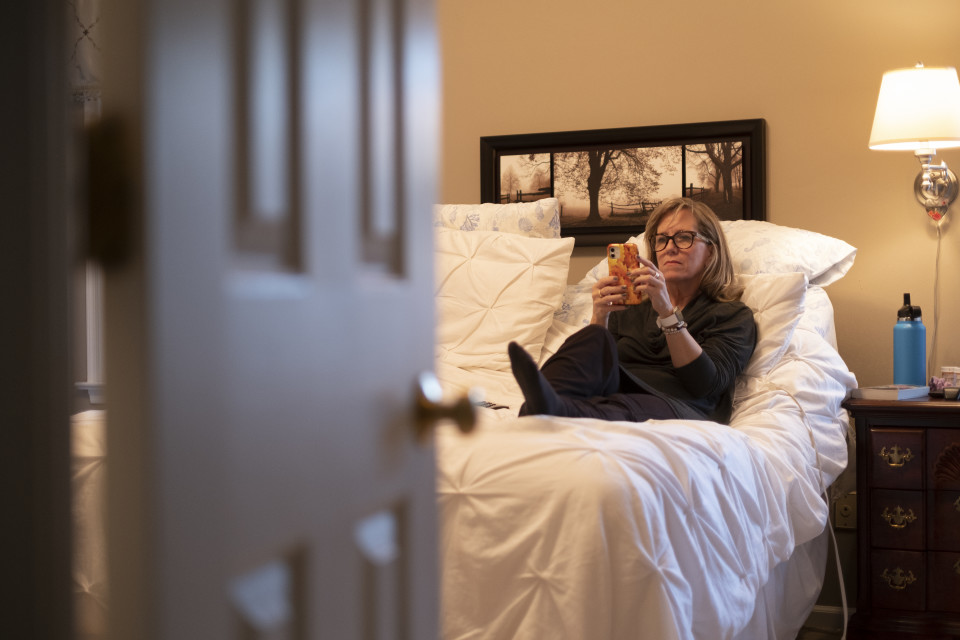
For prudent consumers like Kathy, the lack of engaging and intuitive patient technology in healthcare can be frustrating. But the future looks bright for healthcare consumerism progress.

For prudent consumers like Kathy, the lack of engaging and intuitive patient technology in healthcare can be frustrating. But the future looks bright for healthcare consumerism progress.
In this digital version of the 2021 Medication Access Report, hear from patients struggling to get the medications they need, review data on major medication access challenges and discover healthcare solutions that can make a difference.
For a deeper look into the data driving this year's report, download the full 2021 Medication Access Report.
Editor: Patient last names have been omitted to protect their privacy.
Kathy has always been a proactive consumer and patient. Before grocery delivery and instant pickup were dreamt of, she contacted the manager of her local market to have her groceries brought to her car to avoid illness and the hassle of bringing two small daughters into the store. When she was diagnosed with multiple sclerosis (MS), her prudent consumer savviness became even more important. Fast-forward to the COVID-19 pandemic, and she’s done everything in her power to stay healthy while being immunocompromised.
“I’m scared to go any place,” she said.

Kathy picks up groceries at her local market — an option she chooses to prioritize her health and add convenience to her busy life.
When her neurologist ordered routine bloodwork, she asked if they could use results of a full panel draw she’d had during a recent emergency room visit.
“That’s the way I’m thinking now,” she said. “I don’t want a stick unless I need it and (I consider) cost, and I don’t want to go somewhere and get exposed either.”
For the same reason, Kathy said she’s grateful for the increase in telehealth appointments over the past year. Even after the initial spike in spring 2020, telehealth use remained exponentially higher than ever — over 2,000 percent higher than baseline levels through the end of 2020 — indicating a more permanent option for provider access.Monitoring the Impact of COVID-19 on the Pharmaceutical Market, IQVIA, 2020

Over 54 percent of providers surveyed said telehealth was an available option for all of their patients.CoverMyMeds Provider Survey, 2020 Of the 70 percent of patients surveyed who had participated in a telehealth appointment, over half said they did so for the convenience.CoverMyMeds Patient Survey, 2020 More than one in five said they participated because it gave them more control over their healthcare.CoverMyMeds Patient Survey, 2020
Go deeper into this year's full report to discover more data-driven insights and analysis — including how patients are becoming part of the care team. Download the full 2021 Medication Access Report.

Those managing chronic conditions are often responsible for ferrying their health information among providers and pharmacies. Kathy calls the process "exhausting."
Kathy pointed out that, for some, taking an appointment from home can open up an entirely new dialogue with providers.
“I think there’s a lot to be said for how comfortable you feel when you’re at home,” she said. “I felt like I remembered more that I wanted to talk to the doctor about because I wasn’t so nervous.”
During a telehealth appointment, healthcare solutions that allow pull-through functionality to patient-facing portals can give patients easy reference to their health information, such as vital sign history, diagnostic details and medication information.
And for providers, a glimpse into a patient’s home life can better inform prescribing and healthcare decisions.

Kathy gets her exercise in by walking Snickers, the family dog.
“They can be scanning to know a little bit more about you and your lifestyle and that might lead to more conversation,” Kathy said. “I would hope in the back of their mind there’s some sort of integrative quality to recognize, ‘Oh, you have a dog! Good, do you take that dog for a walk?’
“I just think it gives a lot more opportunity to open up the dialogue and be a little more holistic, and for the patient, (telehealth) makes it much easier and much calmer.”

Cognitive fog or "cog fog" is a symptom of Kathy's MS that can make day-to-day tasks difficult.
The results of her appointments — including labs, tests and prescriptions — can be a little more hectic to coordinate, especially when ferrying information among multiple care team members such as specialists, primary care providers and specialty pharmacists. Unfortunately, healthcare lags an estimated 10 years behind other industries when it comes to using technology to improve consumer engagement.Independent Study Commissioned by Virtusa Finds 85 Percent of Businesses Plan to Invest in Digital Transformation in 2018, Businesswire, 2018 Lack of interoperability between electronic systems and cost are some of the reasons these manual methods persist, decades after most industries have moved on from the fax machine.Why Your Doctor's Office Still Depends on a Fax Machine, Stanford School of Medicine, 2019
“When (electronic medical records) first came out, I was so excited because I thought, ‘This is going to be seamless,’ which is the way it should be,” Kathy said. “But they all are in their different data bubbles.”
Kathy appreciates having her health information in a patient portal so she can monitor her numbers and conduct her own research if she has questions. This processing time can be important, especially since patients forget 40 to 80 percent of the information from their appointments — and of what they do remember, half is incorrect.Patients' memory for medical information, Kessels, 2003

Kathy takes a healthcare call on her phone. She embraces telehealth as it allows her to speak with her provider from the comfort of home.
Patients are often responsible for sharing their drug history, lab data and condition information among several providers.Confronting The Growing Burden Of Chronic Disease: Can The U.S. Health Care Workforce Do The Job?, HealthAffairs, 2009 Provider tools can help digitally surface drug information literature from pharmaceutical companies so patients can more easily expand their health literacy and advocate for their condition management, helping improve potential outcomes.

Affordability can also make a difference when it comes to medication adherence. Apps that promote patient choice in pharmacy and medication can be crucial. While patients are willing to prescription price-shop, they don’t often know where to start or what’s available. Sixty-two percent said they actively asked their provider about medication price and affordability options.CoverMyMeds Patient Survey, 2020 When patients were faced with a prescription that cost more than they expected, 43 percent used price shopping tools to find a better price — up from 28 percent last year.CoverMyMeds Patient Survey, 2020,CoverMyMeds Patient Survey, 2019
“There’s a lot of coordination that goes on that I don’t feel like the patient should have to do,” Kathy said. “Not everybody is as lucky as I am. The kind of stress that goes into finding (financial) assistance and coordinating … I don’t think you can downplay that effect on someone’s health.”
Press inquiries:
media@covermymeds.com
The Medication Access Report is developed in consultation with an advisory board of healthcare experts representing major organizations across the industry — each with unique perspectives, interests and opinions.